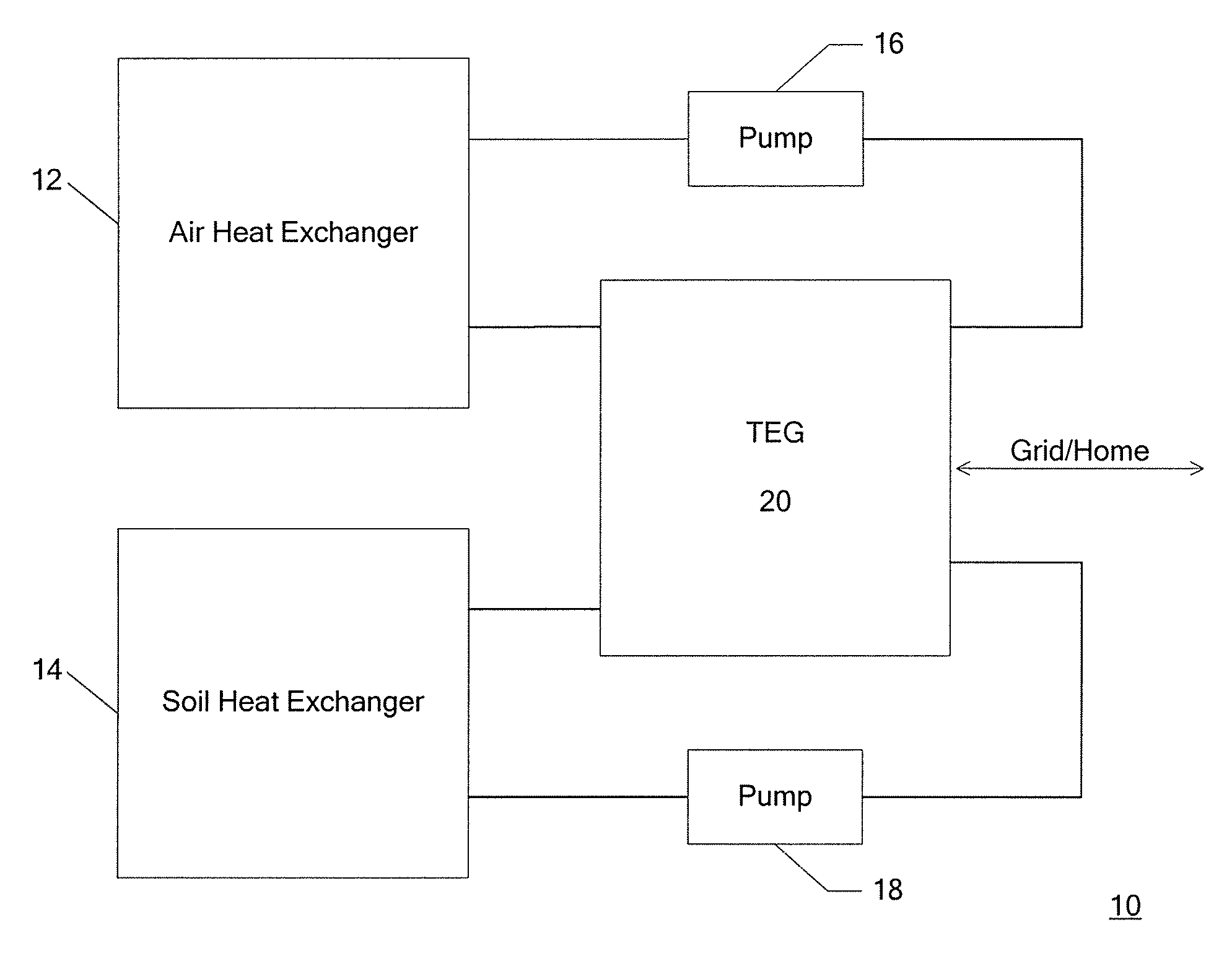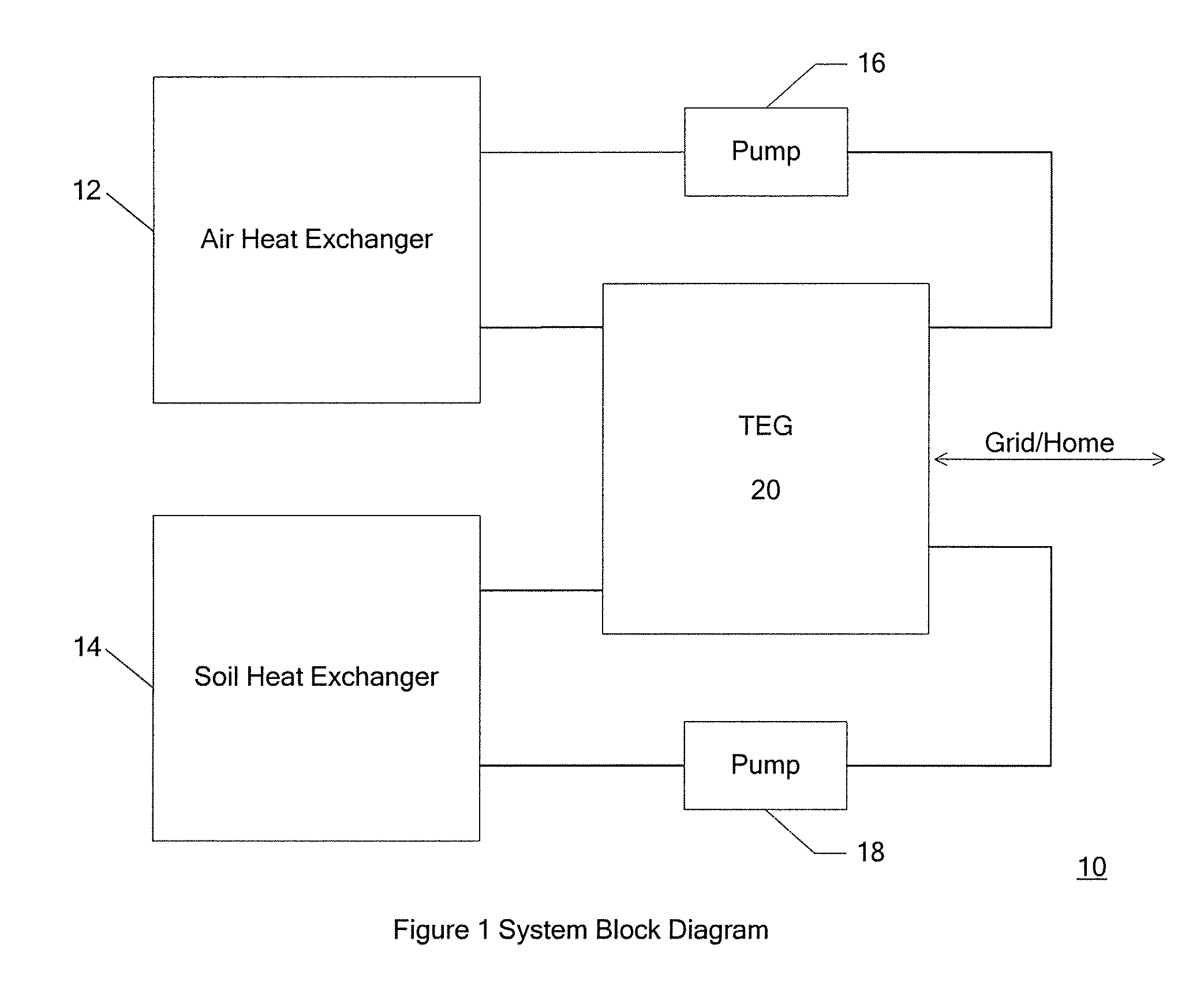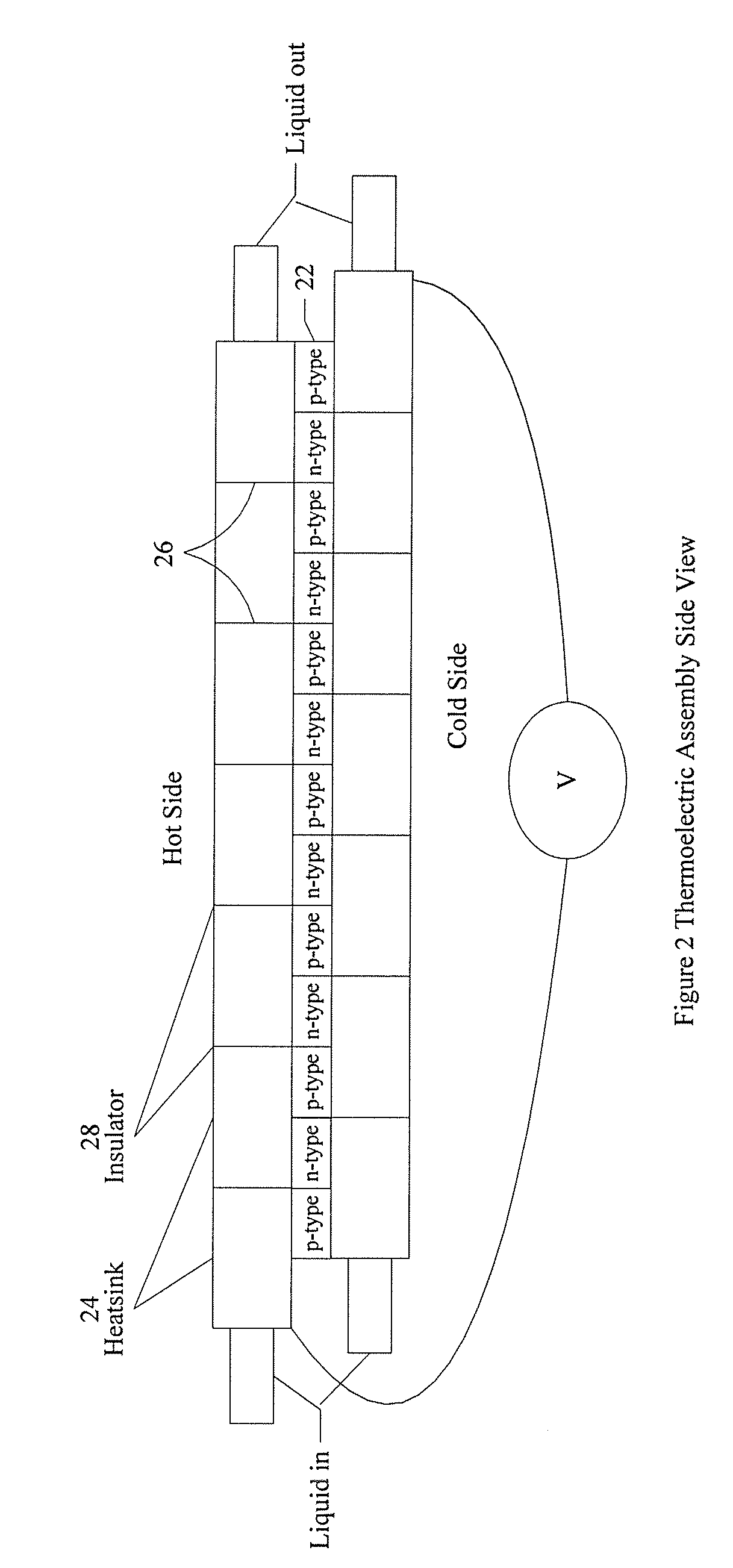Ground source energy generator
a generator and ground source technology, applied in the manufacture/treatment of thermoelectric devices, electrical apparatus, thermoelectric devices with peltier/seeback effects, etc., can solve the problems of low efficiency, negative impact on the environment, and limited power supply capacity, so as to reduce heat loss and high thermal conductivity
- Summary
- Abstract
- Description
- Claims
- Application Information
AI Technical Summary
Benefits of technology
Problems solved by technology
Method used
Image
Examples
Embodiment Construction
[0035]The present invention according to one embodiment is directed to a system for harvesting thermoelectric energy using fluids. FIG. 1 shows a device 10 which harvests energy from the temperature difference between soil and air. At a depth of two meters or greater, the soil temperature of the earth typically remains a fairly stable 8° C., while the air temperature varies with season, climate and time of day.
[0036]The device 10 includes an air heat exchanger 12 and a ground heat exchanger 14, both having associated pumps 16, 18, respectively. The device 10 further includes a thermoelectric generator (TEG) assembly 20. Fluid is pumped through the air heat exchanger 12 where it is brought to the air temperature, using either natural or forced convection. At the same time, fluid is pumped through the ground heat exchanger 14 where it is brought to the ground temperature. The ground-side fluid and the air-side fluid are then simultaneously pumped across both sides of the TEG assembly ...
PUM
 Login to View More
Login to View More Abstract
Description
Claims
Application Information
 Login to View More
Login to View More - R&D
- Intellectual Property
- Life Sciences
- Materials
- Tech Scout
- Unparalleled Data Quality
- Higher Quality Content
- 60% Fewer Hallucinations
Browse by: Latest US Patents, China's latest patents, Technical Efficacy Thesaurus, Application Domain, Technology Topic, Popular Technical Reports.
© 2025 PatSnap. All rights reserved.Legal|Privacy policy|Modern Slavery Act Transparency Statement|Sitemap|About US| Contact US: help@patsnap.com



